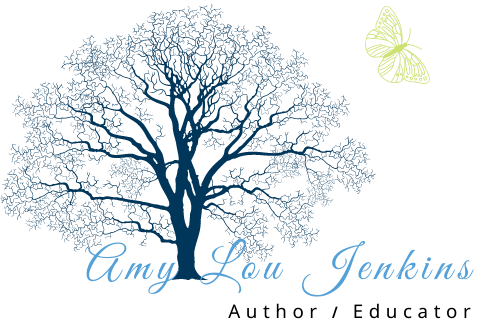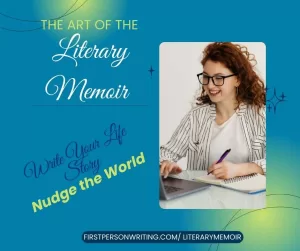
Find Your Narrative: 10 Memoir Structures to Captivate Your Reader
Memoirs enable authors to share their personal experiences as an art form with the world. However, structuring a memoir is one of the keys to creating a book that will find an audience. A well-structured memoir can be the difference between an engaging read and a dull one. The structure holds your story. Let’s look at common structures of memoir, along with the advantages and disadvantages of each structure.
- Chronological memoir structure
The chronological structure is the most common way to structure a memoir. It follows a linear timeline of events, starting from the beginning and ending at the end. This structure is ideal for memoirs that have a clear and consistent narrative arc. It also allows readers to experience the story as it unfolds in real time. An excellent example of this structure is “The Glass Castle” by Jeannette Walls. She does, however, deviate from chronology at times and her adult-reflecting narrator tells her story from her adult future self.
Advantages: This structure is easy to follow, and it is a tried-and-tested format that readers are familiar with.
Disadvantages: This structure can sometimes become repetitive and predictable, making the story less engaging. Because it’s often the default structure for new writers, beginners may choose this structure even when it isn’t the most engaging way to construct the narrative. Walls’ deviations from chronology and reflecting narrator hold the reader to the page.

 2. Reverse-chronological memoir structure
2. Reverse-chronological memoir structure
In contrast to the chronological structure, the reverse-chronological structure starts at the end of the story and works backward. This structure is ideal for memoirs that have a surprising twist at the end of that deal with a significant event that happened in the past. An excellent example of this structure is “The Last Black Unicorn "by Tiffany Haddish.
Advantages: This structure can be very effective in creating suspense and keeping the reader engaged. It' unbalancing.
Disadvantages: It can be challenging to maintain the reader’s attention if the author doesn’t reveal the significance of events until later in the book. There is a rhythm to giving and withholding information that gives the reader both satisfaction and urgency to keep turning pages. This rhythm is essential in reverse chronology.
3. Thematic memoir structure
The thematic structure focuses on specific themes or topics throughout the memoir rather than following a strict timeline. This structure is ideal for memoirs that deal with complex issues, and it allows authors to explore these themes in greater depth. An excellent example of this structure is “Wild” by Cheryl Strayed.
Advantages: This structure allows authors to delve deeper into complex themes, and it can be more engaging than a strictly chronological structure. The thematic approach can create a lasting impact on the reader because it clearly deals with themes that are universal to the reader.
Disadvantages: This structure can sometimes lack a clear narrative arc, making the story less cohesive.
4. Episodic memoir structure
The episodic structure is similar to the thematic structure, but it focuses on individual episodes or moments in the author’s life rather than specific themes. This structure is ideal for memoirs that have funny or novel anecdotes or stories to tell. An excellent example of this structure is “Bossypants” by Tina Fey and “A Very Punchable” Face, by Colin Jost.
Advantages: This structure can be very entertaining and engaging, as it focuses on the most interesting and entertaining moments in the author’s life.
Disadvantages: This structure can sometimes lack a cohesive narrative arc, making the story less impactful.
5. Circular memoir structure
The circular structure is a circular narrative that begins and ends in the same place. This structure is ideal for memoirs that deal with themes of identity or coming-of-age. An excellent example of this structure is the graphic memoir, “Fun Home” by Alison Bechdel.
Advantages: This structure can be very powerful in emphasizing the theme of the memoir, and it can create a strong emotional impact on the reader.
Disadvantages: This structure can be difficult to pull off effectively, and it can sometimes feel contrived.
6. Braided memoir structure
The braided structure combines two or more narratives, either by different timelines or different narrators, to create a more complex and nuanced story. This structure is ideal for memoirs that deal with multiple perspectives or different stages of the author’s life. An excellent example of this structure is “The Argonauts” by Maggie Nelson.
Advantages: This structure allows authors to explore complex themes and perspectives, making for a more engaging and thought-provoking read.
Disadvantages: This structure can be confusing for readers if it’s not executed well. It can also be challenging to balance multiple narratives, which can lead to one narrative feeling neglected or unimportant.
7. Frame structure
The frame structure is a memoir that begins and ends with a specific event or image that acts as a framing device for the rest of the story. This structure is ideal for memoirs that deal with a particular life event. Memoirs are not autobiographies. Memoirs mine events to tell a before and after story. Looking at death in a memoir could begin with the first time an author attended a funeral, and then move through this theme building the story of making peace with the reality of death- this isn’t a frame structure, it’s thematic.
Sometimes authors use this frame and begin and end with the author in the exact same time and/or setting. An excellent example of this structure is “The Year of Magical Thinking” by Joan Didion. Joan Didion went deep into the events of her husband’s sudden death and daughter’s near death. For anyone who has been metaphorically lifted from their life by a sudden change, Didion’s story, framed by events in a specific moment of time, will ring true.
The movie and book ”Forrest Gump: use a frame with Gump sitting on a park bench with his box of chocolates. Near the end of the movie, he gets up from the bench and finds Jenny. The frame takes us more than three-quarters of the way through the movie.
Advantages: This structure can be very powerful in emphasizing the central event or theme of the memoir. Emotional engagement builds resonance in the reader.
Disadvantages: This structure can sometimes feel contrived, and it can be challenging to maintain the reader’s attention if the framing device is not compelling.
8. Hybrid structure
The hybrid structure combines two or more of the above structures to create a unique and dynamic narrative. This structure is ideal for memoirs that require a more complex narrative approach. An excellent example of this structure is “The Color of Water” by James McBride, which combines a chronological structure with a thematic structure.
Advantages: This structure allows authors to explore a wide range of themes and perspectives, making for a more nuanced and compelling read. Every good memoir that this writer can think of uses a hybrid structure to some degree. Even Angela’s Ashes, by Frank McCourt, which can rightly be considered chronologic in structure, uses the wit of his adult narrator to help the reader laugh and cry simultaneously and see through a lens of time that subtly softens the immense suffering.
Disadvantages: This structure can be challenging to execute effectively, and it requires a lot of planning and revision to ensure that the different structures complement each other. One of the biggest newbie mistakes I see is the failure to find a theme in a memoir and the selection of chronological structure. The result can be a simple collection of this happened and then this happened stories.
 9. Modified Chronological Structure
9. Modified Chronological Structure

Advantages: This structure provides a clear narrative structure while still allowing authors to explore different themes and events in their life.
Disadvantages: This structure can be repetitive and predictable if the events or experiences are not unique or well-written.
10. Flashback Structure
The Flashback Structure is a variation of the reverse-chronological structure in which the author starts with a significant event or experience from their past and then jumps back and forth in time to tell their story. This structure is ideal for memoirs that have a strong central event or experience that the author wants to explore. An excellent example of this structure is “Educated” by Tara Westover.
Advantages: This structure can be very effective in creating suspense and keeping the reader engaged while still exploring different themes and events in the author’s life.
Disadvantages: This structure can be confusing for readers if it’s not executed well, and it can be challenging to maintain the reader’s attention if the central event or experience does not hook the audience.
Structure is part of the artistry of memoir
In conclusion, there are several ways to structure a memoir, each with its own advantages and disadvantages. The best structure will depend on the author’s story, the themes you want to explore, and the impact you want to create. Memoirists should read widely in the genre and consider how successful authors structure their books. Learning how great memoirist structure their memoir pays off because while you are learning effective structures, concurrently you experience effective plotting, writing, rhetorical devices, self-disclosure and honesty, themes, emotional beats, and other elements of successful memoirs.
You may also discover what you don’t like. When are you bored or mistrusting? Do you believe the author? Note the places where you are engaged and turned off. This kind of unpacking will help you write and structure your successful memoir.





















